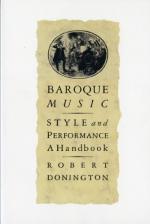|
This section contains 1,870 words (approx. 7 pages at 300 words per page) |

|
Technical Brilliance.
During the fifteenth and sixteenth centuries, painters and sculptors working in Italy and the Low Countries (modern Belgium and Holland) had perfected a number of techniques that allowed them to render nature and the human form more successfully than ever before. Chief among these developments had been the early fifteenth-century discovery of techniques of linear perspective. In the years following 1400 in Florence, the painter Masaccio and the sculptors Ghiberti and Brunelleschi had perfected a set of geometric rules for rendering three-dimensional space on a two-dimension picture plane. Somewhat later, the humanist and artist Leon Battista Alberti set these rules down in a treatise entitled On the Art of Painting. As this work circulated, artists came to master these techniques, and painting and sculpture throughout Italy took on a sense of depth and solidity as a result. While experimentation in perspective dominated the...
|
This section contains 1,870 words (approx. 7 pages at 300 words per page) |

|




